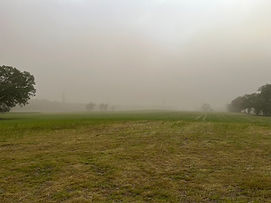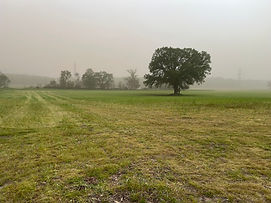
You're Invited to Celebrate Cover Crops with Us!
Join us on July 10, 2025, as we gather around the table to talk about how we all benefit from regenerative ag practices and how each of us can contribute to protecting our natural resources. Register through our Calendar page.
Under OUR covers

is a living, vital ecosystem!
Imagine life on the Earth's surface if we had...

No air...

No water...

No food...
There would be no life.

Did you know it's the same under the surface?
If there's no water infiltrating...
no space for air...
if there's nothing to feed the organisms...
they die.

Under our covers, the soil is alive!
What do we mean by covers, you ask?
Cover Crops, of course!
Soil is not meant to be naked.
In conventional agriculture, fields are left with no cover in between cash crops. Cover crops are unharvested, beneficial plants grown between production crops and are an important practice used in regenerative agriculture.
So, how do cover crops help the soil?

By keeping the soil covered during fallow periods, we are keeping living roots in the soil all year. We are significantly reducing soil erosion and agricultural runoff, which not only keeps the soil intact and healthier, but also impacts water quality.

But that's not all.
Remember when we said that soil is alive? Every part of the Soil Food Web work together to create the healthiest soil. The balance of the underground ecosystem depends on living roots year-round. Living roots nourish the microbes and help increase organic matter. They create channels which increases pore space, allowing for more air and water flow.

It all begins and ends with soil...
Farmers and the rest of the community all benefit from healthy soil.
For Farmers...
Improved Soil Structure
Nutrient Reclamation
Increased Soil Biology
Increased Water Holding Capacity
Decreased Compaction
For the Community...
Less Wind & Water Erosion
Improved Water Quality
Improved Air Quality
Decreased Flood Risk
On May 16, 2025, storms developed near Bloomington, IL, some 200 miles from South Bend. Because of extremely dry conditions in Illinois, wind gust picked up soil from freshly tilled agricultural fields and carried it throughout northern Illinois and northern Indiana. That evening, St. Joseph County experienced the worst dust storm the region had seen since the Dust Bowl of the 1930s.

Photos from May 16, 2025 Dust Storm taken by SWCD Supervisor Marty Lappin.
Soil should not be naked! Keeping soil covered minimizes how much soil can be picked up by winds.

And we're not talking about healthy soils for just agricultural fields! Benefits come from keeping all soils healthy!
Poor plant growth, erosion, poor drainage, and soil compaction are issues we all may deal with. Plus, things like water conservation and climate resilience may be concerns to any of us.
Cover crops is just one of the beneficial conservation practices that can impact our natural resources! Follow the links to read more about keeping it covered
and other practices!

Finally, there is the realization that while agriculture is part of the problem, it can be a part of the solution... regenerative practices can not only help farmers, but society as a whole, no matter where your interest lies.
Gabe Brown, rancher
Dirt to Soil: One Family's Journey into Regenerative Agriculture
